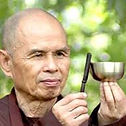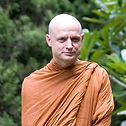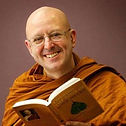

Meditation Package
What is meditation?
Meditation in Buddhism called 'Bhavana', according to Buddhist terminology, means a mental development or cultivation of mental peace to know the mind. It is such a wonderful technique for development of positive inner strength recognizing our own value and the value of others. It is a method of knowing one's own mind and how it works. Knowing the mind helps one to become master of the mind rather than a slave to it.
The human mind most of the time, despite being formless, colorless and shapeless, normally, is engaged either in past memories or in the illusory world of the future. Normal behavior of the mind is searching for peace and happiness through memories or hopes. It loves to plan for a beautiful future and wishes to be happy, recollecting pleasant memories from previous incidents and tries its utmost to resist remembering or to forget unpleasant memories. It is human nature that wants to have a happy feeling.
How many types of meditation?
There are two types of meditation in Buddhism, Serenity meditation (Smatha kammatthana) and Insight meditation (Vipassana kammatthana).
Kammatthana, a synonym of Bhavana, literally means ‘place of action’ or ‘a field where one works’ in other words a workplace or work-station, that is generally translated in English as Meditation
_JPG.jpg)
SAMATHA MEDITATION
Samatha kammatthana, in general is translated as concentration meditation or developing calmness, it comes from the term Samadhi, one-ness, tranquil mind or serenity. It has 40 types of meditation objects one can use to concentrate on bringing the scattered mind to one object to get peace and tranquility. The purpose of this type of meditation is to anchoring mind to achieve peace and tranquility. This meditation relaxes the body and mind thereby using less energy. As a result, it is found that blood pressure goes down, breath slows down and one remains in a tranquil state of mind. It is a foundation for the deeper understanding of true nature.

VIPASSANA MEDITATION
Vipassana meditation is generally known as an insight-meditation and it means investigation into things in diverse ways. It is a scientific way to realise the truth about oneself in an experiential level. In particular, truth about dissatisfaction, unhappiness and being miserable that one faces time after time in life. Dissatisfaction at work, unhappiness with home life or misery at a party for example, is what keeps moods down, lets emotion boil up high, the body heats up and breath becomes longer and faster. The eradication of these miseries is the ultimate purpose of vipassana meditation, so that one can live happily. It leads us to direct perception of changing nature of phenomena, Anicca, and finally realisation of non-self, Anatta. Read more...

Sitting Meditation
Sit in a comfortable and relaxed position. It is very important to sit with a relaxed body.
Gently close your eyes and spend some time with the body. Just feel the sitting body, the different sensations, and the different movements in your body.
Feel sensation and just pay bare attention to every feeling within the body. Try to live with the body.
Practice this for few minutes and open your eyes. Observe different feeling before and after this practice.
Choosing a comfortable meditative posture that does not lead to physical pain is essential. Although, mindfulness meditation is not just doing sitting meditation but being aware of every movement and activities in daily life, sitting meditation is very important as it will allow the body to remain in one position until the end of the meditation period. A frequent change on posture, further, is not conducive for gaining a deeper level of concentration and insight. If pain or discomfort becomes intolerable, one can change the posture but the successful meditator should try to move as minimum as one can. A comfortable sitting posture can be either on a chair or on the floor depending on individual preferences.
The sitting posture in the case of sitting on the floor is either to sit with legs crossed, right leg on top of left; or left leg inside and right leg on the front. The back should be upright but without strain. Do not allow the lower back to be flattened as it will be difficult to maintain this posture for any length of time. Just remember that whatever posture is comfortable for oneself is a good posture. Meditation is not overly concerned in developing skills to find a good posture, but to observe mind and mental activities to purify our minds. Posture is just an essential part that helps the process of purification of mind.
Once seated comfortably gently close your eyes but not tightly. Rest hands on the lap in a comfortable way. In case of sitting on the floor and legs crossed put one hand on top of the other, palms upwards. If sitting on the chair, legs should be placed on the ground completely flat but do not lean on the back. One can rest hands on knees or rest on the lap one hand on top of the head to the tips of the feet. Spend some time with the body and scan your body to become fully aware of it. Begin with top of the head, your neck, hands , chest, abdomen, legs and feet and slowly onto your toes. Release all worries, stress and responsibilities. Notices sensations on your body, feel the existence of your physical body sitting calmly and remain at the present moment mentally and physically. Feel the sensation throughout the body. Try to be completely one being with the body. This will help to develop concentration. Allow awareness of the body, and release tension wherever one feels any tension.

Walking Meditation
The practice of walking meditation is the first stage of learning to be mindful and being aware of activities in our daily life. It is also a practice that brings a balanced mind with eyes closed and eyes opened. It offers a relaxed moment and helps to develop self confidence to carry on with one's aims, and supports and encourages us to work with full effort and energy for the achievement of a completely balanced mind, to be mindful and alert as in sitting meditation.
In the practice of walking mediation, bring your attention to the moving foot, observe its movement and notice it with sharp attention and awareness as it moves. There are many stages of practicing walking meditation. However, three initial stages of practice would be enough to begin with.
-
Normal walking, being aware of right foot and left foot while it is moving forward.
-
Noticing steps, being aware of lifting of a foot and placing a foot on the ground.
-
Noticing steps, being aware of lifting, moving forward and placing a foot on the ground.
Practicing walking meditation also involves awareness of standing, walking, turning and the intention of movements. During the practice of walking meditation our eyes are open so it is very easy to be distracted, you can note the distraction and carry on not looking around during practice of the meditation, seeing but not seeing. The practicing of walking meditation increases gradually depending upon individual progress through the stages of intention, focusing on heel up, lifting, moving, lowering, placing and pressing.
It is very important not to close your eyes while doing walking meditation but you may close them when practicing the standing position.
What is the source of happiness?
Many people think having material possessions is the source of happiness. This material happiness does not last long. In reality, that is not a real happiness. Happiness is where there is no suffering. If there is no suffering, I am sure we do not know what happiness is. Therefore, knowing that suffering correctly, understanding its nature, its origin and the characteristics of that, is a source of happiness. This happiness is born out of the path factor of 'right understanding of suffering'. Right understanding allows one to fine a way out of suffering. Simply saying 'knowing one's own-self gives a real happiness. Living a moral and controlled life with purified mind brings a real happiness.
Further, being kind to one another, being generous and compassionate, also create happiness. According to the teaching of the Buddha, there is a highest happiness known as Nibbana, which is an ultimate states of real happiness that is not dependent on any conditions; free from greed, hatred and ignorance.

Why suffering is important?
Suffering is very important. Without suffering no one knows happiness. Understanding suffering makes us happy.Happiness is where there is no suffering. Realizing what suffering is leads us to find ways to be happy. Further suffering makes one strong and perfect. Every challenge in life energizes people to be creative and find different ways to fight it. So, without suffering we become lazy and bored. Suffering is one of the very important factors that drive us to find ways to be happy and find wisdom. When we have experienced suffering and discussed it with our parents, they would say 'we all have been there'. Learn suffering in its root and you will learn to enjoy life.
The Goal in Buddhism
The entire Buddhist teaching is to recognize the suffering, Dukkha; and its extinction, Nirodha. The Buddha taught that life is ‘dukkha’ – suffering or dissatisfactory-ness caused by wanting, desire, craving, clinging, grasping attachment.
Clear understanding of suffering and its origin and path leading to elimination of it, is the basic Buddhist declaration, this is ‘sukha’, happiness or lack of suffering. To eliminate it the Buddha provided a systematic way of dealing with it, which is called meditation, which facilitates one to stop clinging to the unsolved suffering and problems by understanding the true nature ‘anicca’ – constant change of entire phenomena. Clear mind and right understanding of good and bad actions, regardless of any judgements will help to see this constant change. Therefore, the Noble Eightfold Path; right understanding, right thought, right speech, right action, right living standard, right effort, right concentration and right mindfulness, is the moral obligation that needs to be fulfilled through mental development and training, which leads to the elimination of three roots of defilements; Greed, Hatred and Delusion. The ultimate elimination of these three unwanted states is called Nibbana, the state of ultimate tranquility of mind, which one can enjoy in this life, leaving no conditions for new existence. The Buddha said:
‘The extinction of Greed, the extinction of anger, and the extinction of delusion: this indeed is called Nibbana.’

KEY TERMS
Anicca = impermanent, unstable, having the nature of constant change. One of the three characteristics of conditioned phenomena.
Anatta = literally means ‘not-self’, one of the three characteristics of conditioned phenomena, impersonal, without individual essence. Things that change constantly never can be a solid unchanged subject.
Dukkha = literally means ‘hard to bear’ ; suffering, restlessness, un-satisfactoriness, disease, inability to accept the reality of changing natures, one of the three characteristics of conditioned phenomena.
Sukha = happiness, mainly mental satisfaction and joy
Pali = the language that is used by the Theravada school of Buddhism to preserve the memorized teachings of the Buddha, and that was believed to be in use at the time of the Buddha.

Let's Practice
YouTube VDO links...

Loving Kindness Meditation
Metta meditation or Loving Kindness Meditation consists of sharing positive thoughts to oneself and to every beings.
Benefits of Loving kindness: when the mind-deliverance of loving-kindness is cultivated developed, made much of, made the vehicle, made the foundation, established, consolidated, and properly undertaken, eleven blessings can be expected.
Meditation on Universal Love
Sit in a comfortable position, let the body relax. Place your right hand on the same side of the chest where the heart is. Feel the rhythm of your heart. Open the door of your heart like opening a flower. Feel the sensation of kindness and spread love and compassion to yourself.
May I be happy
May I be filled with loving kindness
May I be well
May I be peaceful and at ease.
Can you fell the vibrant feeling of love and compassion?
You are saying it from the bottom of your heart. You are not saying it just like parrot does. Feel it, be a best friend with yourself. Spread the love and compassion from the bottom of your heart to each and every part of the body, your whole body. You are really wishing for yourself that you will be well physically and mentally. Feel peace and tranquility in every part of the body.
Let us forgive and forget whatever wounds have there may have been caused by us to others, and to us by others. Forgive yourself and others by realizing the act of wounds and accepting it and share love and compassion to all. I forgive you all.
Feel the vibration of your heart. Open your heart and share love and compassion to one and all. Whatever being there are, may they be happy, may they be filled with love, may they be well and may they be in peace.
Similarly, share love and compassion to all other sentient beings in the world
At the end of meditation sit quietly for a minute or two and reflect on your experiences during meditation and come back to normal life.
It is highly recommended to practice this daily.
About Author
He was ordained into the Theravada school of Buddhism in Nepal, studied Buddhism and Buddhist Meditation in Thailand where he took higher ordination. Since his arrival in the UK as a minister of religion, he has been involved with different Buddhist organizations as a religious workers, teaching Buddhism and meditation and involvement in different religious and social activities. Since the establishment of the Varapunya Buddhist Society and Meditation Centre in Aberdeen he lives and teaches at the centre.
Reference book:
-
Meditation Buddhism in practice by Ven. S.M. Sujano
-
Your Questions. My Answers by Ven. S.M. Sujano
Reference VDO:
Varapunya Meditation Centre, Easter mains of Kinmundy, Kingswells, Aberdeen, AB15 8RD, Scotland, England. Tel. +44794219241
QUOTE
_JPG.jpg)
"Being right about something is not the end of the matter. It is also important how you deal with that sense of being right so that it does not bite you. In particular, observe how it makes you feel about people who are wrong and how you treat them. If you are not mindful, being right may cause you almost as many problems as being wrong. "
by Ajahn Jayasaro






.jpg)
.jpg)
.jpg)
.jpg)
.jpg)
.jpg)
.jpg)
.jpg)
.jpg)